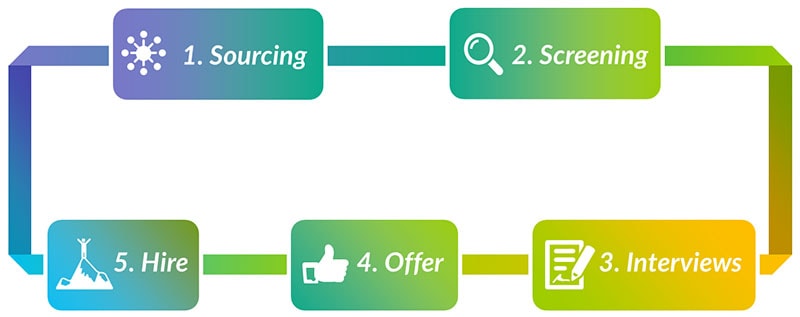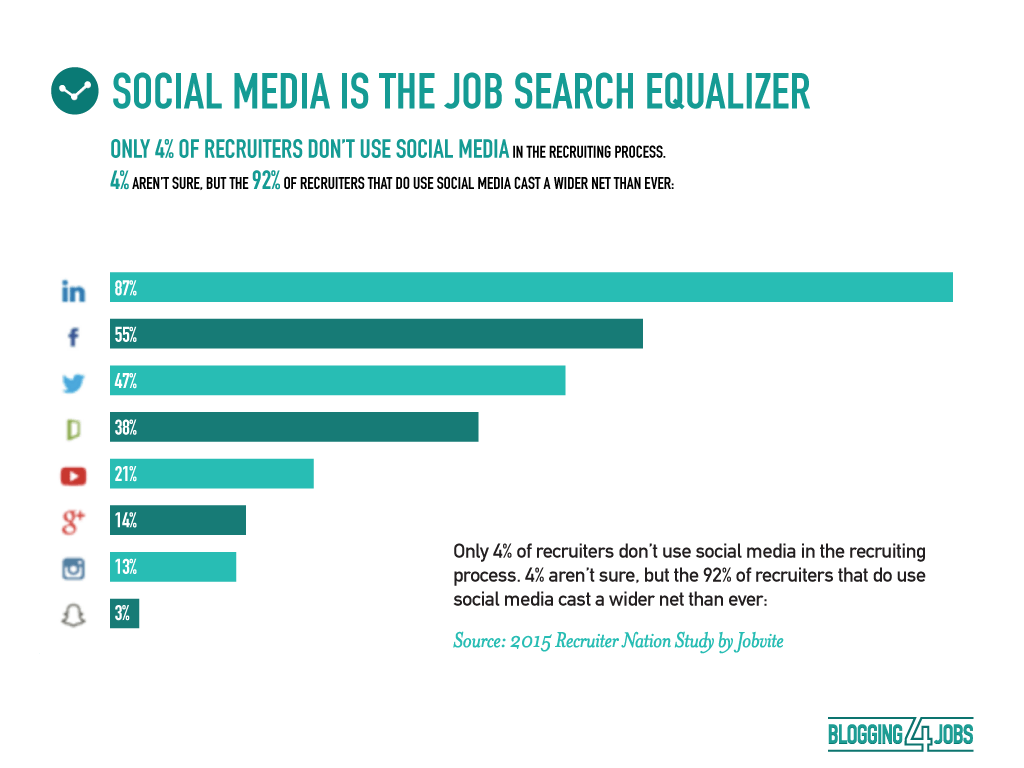
How to design a fully functional hiring process in IT

에 따르면 Global HR Research,“66% of companies make a bad hiring decision each year”. That’s right. 66 out of 100 companies looking for people to join them make a mistake somewhere in the hiring process.
As Les McKeown, CEO of Predictable Success argues in a remarkable post How to Hire Great People – Every Time, “the success of your business is in the hands of your people. They take hundreds – probably thousands – of individual actions on your behalf every day, and if the sum total of all those actions is a net positive, you win. If the overall result is a net negative, you lose.“ In other words, bad hiring affects your organizational outcomes, big time.
Sounds pretty straightforward, right?
With that in mind, how come so many organizations hire people who don’t take the right actions on their behalf day in and day out? Why are so many companies still making hiring mistakes, and can you prevent these mistakes from happening?
You can, and you absolutely should.
McKeown rightly believes that regardless of company size and industry you need to treat the “hiring process with the same degree of fierce professionalism as you would the development of a strategic plan or the design of a new product or service.”
Unfortunately, hiring in tech still relies heavily on gut feeling and curve-ball questions. Luckily, there are means to steer away from them.
Why your hiring process should be scientific
In order to hire great people, your recruitment process has to be scientific. You need to:
- Establish a template so you can A/B test for optimal results,
- Build a structure you can fall back on when things don’t work out.
The idea is that when (or if) you do mis-hire, you can look at the process and trace your steps back to the place where things went wrong.
Your aim should be to design a process you can easily modify, replicate and draw conclusions to hire great people every time you’re recruiting. Just like marketers use conversion rate optimization to improve every stage of the marketing funnel, you should be trying to optimize every stage of the recruitment funnel for speed and Quality of Hire.
In this post, we take a look at the template you should be using.
The 5 steps to successful hiring
Here are the five steps you need to take to hire successfully in tech:
- Sourcing
- Screening
- Interviews
- Offer
- Hire
+ Nurturing (throughout the entire hiring process)
Each of these steps should be cleared before the applicant proceeds to the next one.
1. SOURCING
Sourcing is “a talent acquisition discipline which is focused on the identification, assessment, and engagement of skilled worker candidates through proactive recruiting techniques”. It must be underscored that sourcing and recruitment are most often treated as separate disciplines, but their borderlines are somewhat fuzzy.
Due to the massive shortage of talent, sourcing has come dangerously close to what feels like finding a needle in a haystack. If done wrong, it can easily be the most time-consuming stage of the process. Sadly, HR professionals are currently spending far too much time & effort to chase after people who don’t meet basic requirements of the job.
One of the key problems is that despite the fact that talent wars are definitely heated up, many HR professionals still operate with outdated methods. According to Glassdoor study conducted by Harris Poll:
- “48% of hiring managers note they don’t see enough qualified candidates for job openings,
- 52% of hiring decision-makers say passive candidate sourcing has been less effective for their company”.
The reason for this is simple: most HR professionals rely on the same recruitment techniques, which means they come across and pitch the same candidates.
-
Delve into social
Social recruiting is more than a buzzword. Make sure you take advantage of it. If you want to attract the right fit for the open spot, diversify your sourcing techniques. I know how much you like LinkedIn, but so do others – LinkedIn is the number 1 social media tool for recruitment and hiring, with 87% of recruiters using it on a regular basis.
Source: Workology
-
Look for people who care about the craft
Attend meetups, conferences, hackathons, workshops and all industry events where you can find developers who strive for learning.
-
Move your skill tests further up the funnel
The earlier you verify someone’s skills, the earlier you know if you should be devoting time to them at this point. However, make sure you’re not contacting people randomly with a generic “Hi, can you take our test? We’re recruiting and you seem like a fit”. Remember you need to make your outreach stand out. Personalize, personalize, personalize. Express interest in the person and their skills, show that you’ve taken the time to get to know their profiles and portfolios (if they are available). You can’t go wrong with talking to someone about who they are and what they do.
-
Go mobile
Glassdoor에 따르면 45% of job seekers say they use their mobile device specifically to search for jobs at least once a day.
Source: 유리문
Mobile is becoming the preferred job application channel in IT, so if you’re looking for tech talent without a mobile-friendly careers page, you’re setting yourself up for a fall.
-
Make sure you know what exactly you’re looking for
According to research by Neeraj Kumari from Manav Rachna International University, the ideal recruitment efforts should “provide information so that unqualified applicants can self select themselves out of job candidacy; this is, a good recruiting program should attract the qualified and not attract the unqualified. This dual objective will minimize the cost of processing unqualified candidates.”
-
Give the benefit of the doubt
Some of the top tech talent pool may have CVs that are not up to date – if you look through someone’s resume and see something that sparks your interest, ask them to take the skill test. It’s easy to miss talented developers if they haven’t worked for the biggest companies out there, but even easier to verify their skills thanks to screening software.
2. SCREENING (aka “select or reject”)
While screening, recruiters review resumes and cover letters, conduct video or phone interviews, and identify top candidates. They also ask candidates to take skill screening tests which allow differentiating applicants from do and don’t without the involvement of personal bias. In other words, pre-employment tests let you “assess candidates eligibility against the criteria stipulated in the job opening”.
While it’s important to understand that skill screening cannot be seen as an alternative to interviewing a candidate, testing their knowledge of technical minutia early stage allows you to decide if you want to get to know them better. That said, pre-employment tests should be brief and resemble the actual work to be done if hired. The “first day at work” experience is much needed because it shows both sides what can be expected.
-
Test skills early in the process
I believe skill screening is especially important in the context of recruiting developers. Your aim should be to improve the quality of hire and time to fill. Screening early stage allows you to do exactly that.
-
Find a flexible tool
Use a platform which allows you to use ready-made programming tests or create your own ones from scratch (like our very own DevSkiller)
-
Test programming languages, frameworks, and libraries
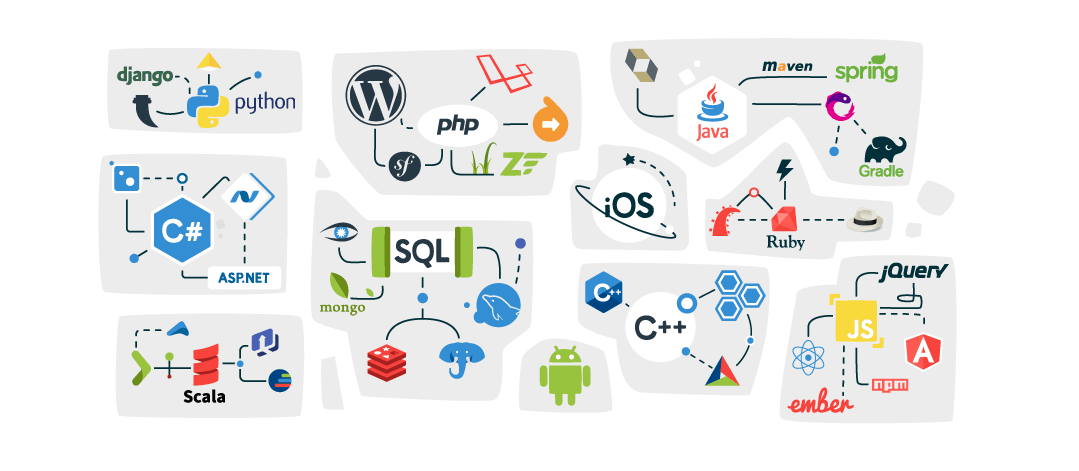
This is extremely useful for tech recruiters who can’t code. Asking random or vague questions like “Are you familiar with XYZ?” can’t provide you with clear answers you should use to support your decision.
-
Make sure your test resembles the work to be done if hired for the position
Test actual knowledge. Inverting a binary tree on a blackboard doesn’t tell you if the person is going to do well at work. Their knowledge of technical minutia combined with a positive interview experience is far more likely to do so.
3. INTERVIEWS
In most cases, companies invite all of the briefly pre-selected candidates to an interview, where a technical person representing the organization verifies their skills one by one. This is a huge waste of time and resources – as stated before, skill screening by means of dedicated software should take place early on to optimize the whole process for speed and efficiency.
-
Define your must-have skills and qualities
Career coach & Forbes contributor Lisa Quast argues that “clearly defining the job and position requirements (education, experience, knowledge, skills, behaviors, and attitudes) necessary for someone to be successful will actually help make the interview process easier. This is because you then have a roadmap to follow for evaluating each candidate against the requirements to determine who will be the best fit.”
-
Ditch magic bullet questions
Don’t ask people what their spirit animal is. Make sure you use the little time you have to find out whether this particular person is right for this particular job. Answers to outlandish questions are not indicative of future performance, so it’s high time you said goodbye to them for good.

-
Ask about their interests
Ask them what blogs they follow, if they attend meetups & learn new things. As Peter Bell, Head Learning Instructor at Flatiron School argues, the fact that someone only programs in one language and is never venturing out of it to try something new may indicate they don’t have the qualities you need.
Watch this Google for Entrepreneurs and General Assembly class led by Peter Bell for more insights on hiring developers:
-
Be friendly & approachable

A study by Mattersight reveals that a staggering 80% of employees “say they would take one job over another based purely on personal connections formed during the interview”.
Be professional, but don’t forget to be human. A lot of people seem to believe these two are polar opposites, which they’re clearly not.
4. OFFER
You’ve found the right person to join your developer team and now it’s time to make them an offer.

After interviews and reference checks are cleared, the successful candidate is usually presented with a verbal offer (typically by phone). It’s usually followed with a formal offer which “confirms the details of the offer of employment including some or all of the following: job description, salary, benefits, paid time off, work schedule, reporting structure, etc.”. Written offers help to avoid misunderstandings regarding terms and conditions of employment.
Undercover Recruiter lists most commonly made mistakes that lead to candidates turning down an offer:
- “Salary is less than what they wanted,
- Candidate’s personal situation changes including being offered a job they are more interested in,
- Business takes too long to either offer the position or get a contract out to the candidate.”
With that in mind, how to increase your chances of winning over the dream candidate?
-
Offer attractive pay
에 따르면 Glassdoor research, “78% of software engineers say the top reason they would leave their job is salary and compensation”.
If the offer is turned down due to salary, consider making a counter offer, negotiate bonuses or agree to a salary review after 6 months of employment.
-
Be quick
에 따르면 MRI Network study quoted by Glassdoor, “47% of declined offers in the second half of 2015 were due to candidates accepting other jobs”. Top developers not only have jobs, they usually have opportunities and projects lined up. If your recruitment process drags for weeks, they are likely to choose other projects. Remember that the best devs out there are taken rapidly.
-
Weigh your words
Verbal terms can be legally binding so make sure there is no discrepancy between verbal and written offers. Any misunderstanding regarding terms of employment is likely to cause disappointment on the side of the dev, which is the last thing you want at this point. Finally, make sure offer terms do not discriminate, either directly or indirectly.
5. HIRE
This step is pretty straightforward (yet super rewarding!). You need to make sure all documentation necessary to complete the hire is in order, including permits, medical check documentation etc. As a matter of fact, it is advised that all checks are completed for the potential hire before they accept the offer. Should you fail these requirements, you may need to start over which means higher cost of hire and extra time to fill the vacancy.
Start over, you say?

Remember that every recruitment process should be closed which means you need to notify all applicants who didn’t get selected.
+ NURTURING (throughout the entire process)
Nurturing your leads should start early on, preferably during pre-apply stage in order to increase your chances of finding the right candidate to fill the position. Post-apply stage is equally important because you need to sell the company to the developer. For more information on how to create a complete nurturing strategy in recruitment, read this concise yet informative post by Elyse Mayer.
-
Treat every single applicant like a potential customer
에 따르면 Mayer, “rather than “going dark,” remember to close the loop with every applicant who reaches out by acknowledging each contact, resume submission or interview appearance”. Someone might not be a fit now, but they may be in a couple of years – make a good impression and do all it takes to make it last.
-
Build a strong employer brand
에 따르면 LinkedIn data, companies with a strong employer brand get a head start. LinkedIn uses their internal metric called Talent Brand Index (TBI) which indicates talent brand strength of every company in the network.
As it turns out, strong TBI means:
- A 31% higher InMail acceptance rate,
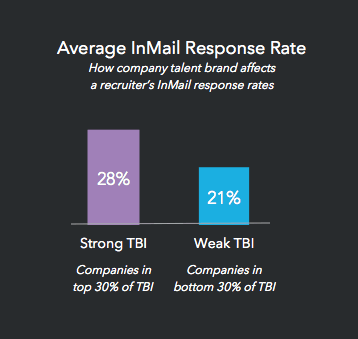
- A 43% decrease in cost per hire,
- A 20% higher rate of hire (faster growth, also due to the ability to attract top talent),

- 2.5x more applicants per job post on LinkedIn.
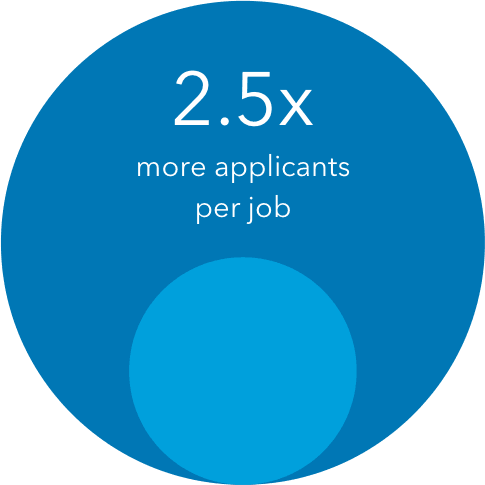
-
Don’t forget about recent hires
에 따르면 유리문, you should utilize the onboarding period to get feedback on your recruitment process.
You should also remember to talk to your recently hired developers and give them basic feedback on how they are doing. This can be a learning experience for you, as 유리문 suggests you should “continue soliciting feedback from new hires at 30-, 60- and 90-day intervals to gauge how confident they are that they made the right choice to join your company.” This decreases the staff turnover costs, which according to Amacom reach up to 200% of one’s annual compensation.
Conclusion: key takeaways
It takes a lot of time and effort to find the right person for an opening, especially in IT. Given that success of an organization is a sum of successes of its individual employees, the amateur-hour approach must be abandoned ASAP.
You need to make sure you’re always following the same pattern you can later optimize for speed and quality of hire. In other words, you need to start looking at recruitment metrics before you decide to improve them to make an informed decision where to start.
- Find new ways of sourcing to expand your talent pool,
- Screen skills early on,
- Stay away from superficial or random questions,
- Build and maintain rapport with applicants,
- Nurture leads throughout the entire recruitment process,
- Build a strong employer brand to reduce Cost of Hire and increase response rate.
